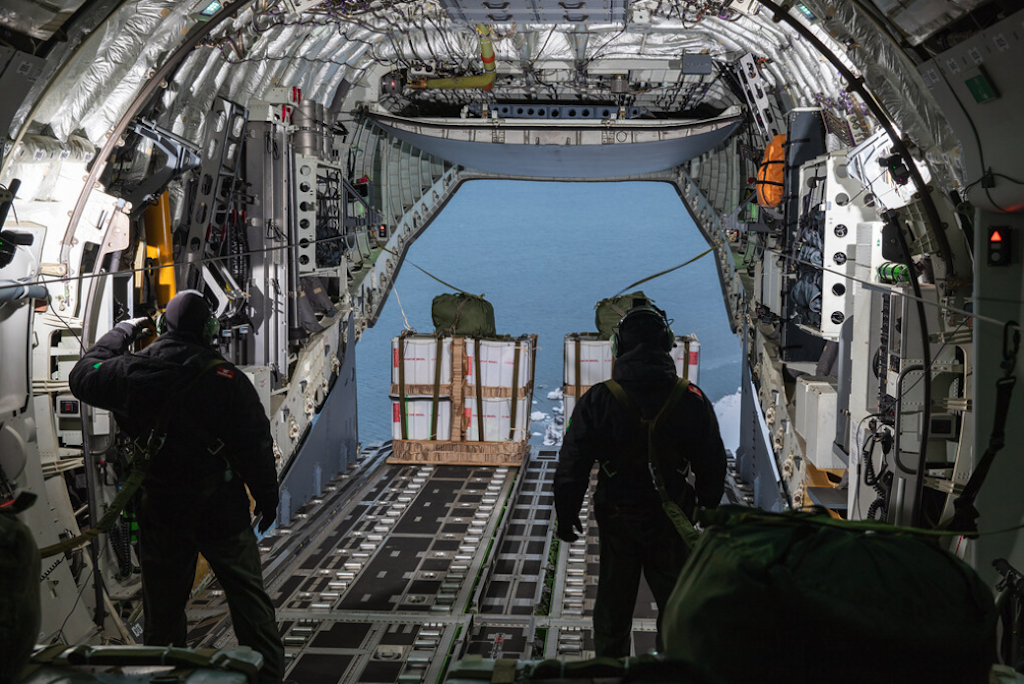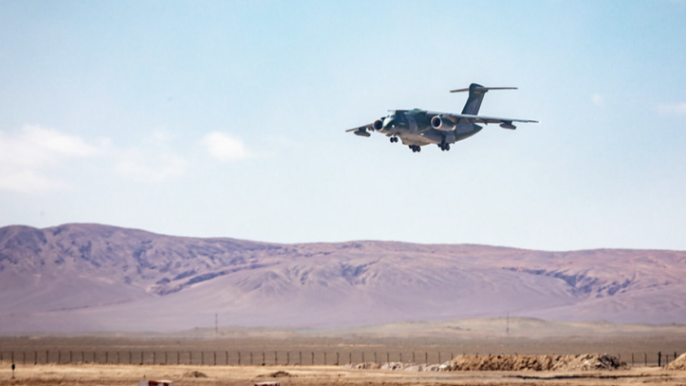Whatever The Weather, The C-390 Millennium Always Delivers!

Reliability and adaptability are essential to every mission. Whether it’s an operation in times of conflict, or to support a humanitarian crisis, the equipment you choose needs to perform. In every climate, from the flat sands of the desert to the dizzying heights of the Chilean mountains, the Embraer C-390 Millennium is proving itself time and time again.
In the southernmost reach of our globe, for example, lies the icy continent of Antarctica. In June 2022 the Brazilian Air Force (the Força Aérea Brasileira - FAB), successfully executed the C-390’s first mission in one of the world’s most difficult, dangerous, and inhospitable environments.
Brazil has been a part of the Antarctic Treaty, committing itself to scientific research, since 1983, and supports its own station, the Comandante Ferraz Antarctic Station. Maintaining the station, and ensuring it is constantly
supplied, is an ongoing challenge, especially since the waters surrounding the station are frozen for most of the year. Historically, the station has been re-supplied using naval vessels and/or other aircraft. Now it was the turn of the C-390 Millennium to play its part. Departing from Rio de Janeiro, the Millennium set off on its 5,300km journey holding almost 2,000kg of supplies including food, clothing, equipment, and spares. Although a comparatively modest weight of cargo for a Millennium, the delivery was not without its challenges.

Modern delivery systems
The airlift to the Brazilian station is a highly complex operation due to various factors. First, the station sits at the centre of a windy bay circled by high mountains, which creates substantial orographic turbulence and narrows the aircraft’s area of manoeuvre. Second, the available drop zone consists of a mere 400m x 200m rectangle, markedly close to the station facilities. This requires incredible precision from the pilot and crew at the airdrop, or else risk sending the supplies to the bottom of the icy waters of the bay or worse, hitting the research station facilities or the men and women within it.
The resupply took advantage of the aircraft’s Continuously Computed Drop Point (CCDP) system, an aiming algorithm responsible for calculating the ballistics of the airdrop. After setting the coordinates for the drop zone and its dimensions, the Head-Up Displays (HUD) of the C-390 present a scalable delineation of the drop zone against the actual terrain, superbly increasing the pilot’s awareness and perspective of the objective. The operation is automatic, and after checking that all parameters are valid, the pilot needs only to press the trigger seconds before the drop point to allow the cargo to release.
In its first mission to Antarctica, the C-390 Millennium delivered nine packages to the grateful personnel at the research station, albeit that it can drop almost three times that quantity and weight (the aircraft can launch up to 24 packages and 21,400 kg using CDS method) if required. Despite the limited drop zone, the highly accurate airdrop system allowed the release of two packages simultaneously, reducing the operation time in half from previous missions. The packages all fell within the desired impact point on the drop zone, proving the exceptional capabilities of the aircraft.

Reliability in the extreme
As well as performing with proven reliability and excellence in extremes of cold, the C-390 Millennium is similarly at home in the intense heat of the blistering sun, as was proven recently in an operation in the Atacama desert region in Chile, described as the driest desert in the world.
In October 2022, a KC-390 Millennium (the ‘K’ denoting its air-to-air refuelling capability) performed in-flight refuelling missions as part of the Multinational Combined Air Exercise SALITRE IV. The objective of Exercise SALITRE IV is to expand cooperation and relationships between air forces from South America, the US and Canada, increasing their interoperability through common planning in a NATO format. The event is also an opportunity to train crews and test command and control systems, logistics systems and personnel in all areas of defence.

In more than 300 air missions carried out during the exercise, which included around 50 daily take-off and landings, the KC-390 maintained an operational success rate of 100%. Every individual mission was accomplished without a single issue, continuing its phenomenal reliability already demonstrated in similar multinational exercises.
The range and in-flight refuelling capabilities of the Millennium were extended during the exercise through removable fuselage tanks, which can be installed and removed in a few hours. This adds up to 12,000 kg of fuel to the aircraft's capacity for air-to-air refuelling and/or increasing its range for long-distance flights and SAR operations.

For an aircraft with such a rugged design, operating across icy glaciers or desert plains is not an issue. The Millennium performs similarly well in areas of high humidity such as The Amazon, where humidity levels average a breath-catching 88%! Despite such conditions, the KC-390 Millennium from the Brazilian Air Force has been delivering life-saving medicine and food to local inhabitants, often in isolated villages, and typically landing on short, hastily prepared landing strips.
With its new aircraft, Embraer has demonstrated a new generation of thinking. This multi-mission military transport aircraft has been designed from the outset with flexibility at its core, setting a new standard in medium air mobility. It provides the perfect blend of mature and proven technology with state-of-the-art thinking to ensure the best of both worlds – reliability and new experience in performance.




